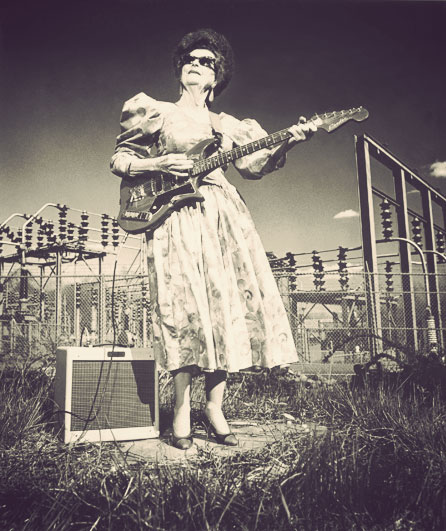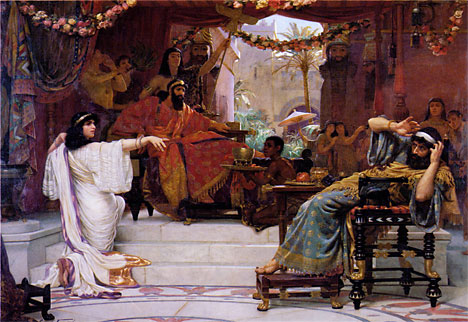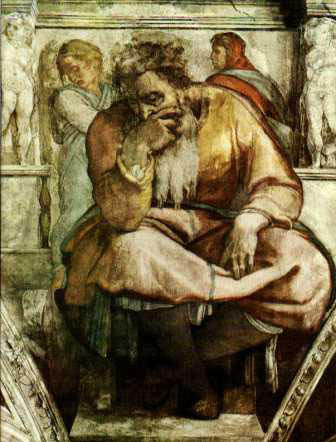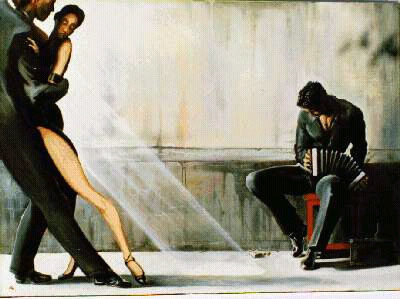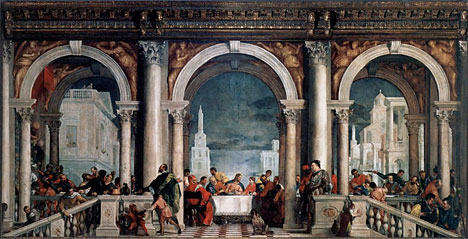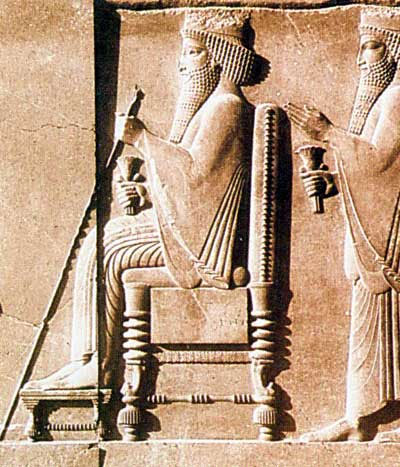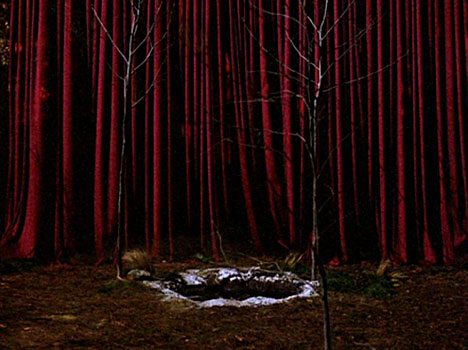
or The Times of the Gentiles
Structure of Daniel 7 – Part 1
The book of Daniel consists of 2 parts, a head and a body. Chapters 1-6 follow the Dominion/Covenant pattern (Forming and Filling), topped off with chapter 7 as the Succession, the Future. It is a New Israel, a New Covenant and a New Creation.
1
…..2
……….3
……………4
……….5
…..6
7
But the account of Daniel itself becomes the “head” of a greater body, the history of a new Israel, a nation resurrected from the grave of Babylon, a sweet kingdom-honey swarm drawn by the Warrior Bridegroom from the corpse of the Babylonian lion. Chapters 7 to 12 are the “body.”
1-6 (Daniel)
…..7 (Waters/New Gentile Hierarchy)
……….8 (Sacrificial Animals)
……………9 (Messiah cut off)
……….10 (Daniel “resurrected”)
…..11 (Conquest)
12 (End of the Old World – AD70)
So the history of Daniel’s personal ministry within the belly of the beast is a prefigurement of Israel’s second-Temple history, from Ezra to AD70, the Jews’ ministry as priests within a Gentile kingdom. As with Christ and the Church, the life of the second-Temple Bride was drawn out of the side of a faithful Bridegroom.
Daniel 7 gives us a rundown on the entire era, the construction of Ezekiel’s Temple, the Jew-Gentile worship construct which would last until its destruction (as Land beast and Sea beast) in AD70. You can read more about this in James Jordan’s brilliant Daniel commentary, The Handwriting on the Wall.
Of course, every stanza reflects the same structure. The Bible is entirely contrived. And so is history. Just like the Bible, history looks like a shambles unless you know what’s going on. None of the details that we skip over as meaningless is there for no reason. Dr Leithart gave us some great advice last week for reading the Bible, and we can apply it to life. It is simple. “Pay attention.”
Creation – Initiation
In the first year
…..of Belshazzar king of Babylon, (delegated authority)
….. ….Daniel had a dream (Law given)
….. ….. ….and visions of his head [while] on his bed. (Law opened)
……….Then he wrote down the dream, (Law repeated)
…..[Lit: and the head
of the matters spoken/commanded].
Division – Delegation
Daniel spoke, saying, (Delegated source)
…..“I saw in my vision by night, (Passover darkness)
……….and behold, (Ascension – view into heaven)
……………the four winds of heaven (Pentecostal Spirit)
……….were stirring up the Great Sea. (Gentile swarms)
…..And four great beasts came up from the sea,
…..(New “Day 6″ Land animals as mediators)
each different from the other. (A Succession of rulers)
Notice that this second stanza has the combined themes of water (Exodus) and a new delegated authority (Hierarchy). The Lord was creating a new Temple out of the Gentile empires, taking Sea Monsters and turning them into cherubic Guardians of the Land, just like the four beasts that surrounded His throne in heaven. As the original Aholiab and Bezalel, He took Gentile kingdoms and fashioned them by the crafty Spirit into a throne — a zoo lounge — on earth. The four winds of heaven connect heaven with the four corners of the Land, the Bronze Altar of God…
Ascension – Altar
The first [was] like a lion, and had eagle’s wings. (King and prophet)
…..I watched till its wings were plucked off; (Authority removed)
……….and it was lifted up from the [Land] (Ascension/Land/Dust)
……….and made to stand on two feet like a man, (Firstfruits Man)
……………and a man’s heart was given to it. (Man replaces wilderness beast)
……….And suddenly another beast, a second, like a bear. (A second witness)
…..It was raised up on one side, (Body)
…..and [had] three ribs in its mouth between its teeth. (Head)
And they said thus to it: ‘Arise, devour much flesh!’
(a Command which leads us from the Altar to the Table, the bread and then the New Covenant wine.)
This structure makes Babylon the kingly empire, the golden head. Daniel was a sort of Covenantal “bridegroom” whose ministry lasted until just after Babylon’s end. Persia was a bridal empire, and you can read about that in the book of Esther. James Jordan’s writings on Esther are brilliant. You should get a hold of them. But that’s only two empires, and the bronze altar (Ascension) has four horns.
Ascension – Table
After this I looked, and there was another, like a leopard, (Another kingdom)
…..which had on its back four wings of a bird. (Heavenly authority: Exodus 19:4 [1])
……….The beast also had four heads, (Altar-Land with four horns)
……….and dominion was given to it. (Scroll given to Alexander)
……………After this I saw in the night visions, (Daniel the Lampstand)
……….and behold, a fourth beast, dreadful and terrible, exceedingly strong.
……….(This is another “second” empire witness, and at this point in the
……….structure, it seems “unrefinable.”)
…..It had huge iron teeth; it was devouring, breaking in pieces, (Conquest by Head)
…..and trampling the residue with its feet. (Conquest by Body)
It [was] different from all the beasts that [were] before it, and it had ten horns.
(Succession – before and after)
The second pair of empires mimic the first, but corresponding them with the statue in Daniel 2, they are stronger metals but less precious, more corruptible. (Gold doesn’t corrode. Iron rusts.) Roman iron mimics Persian silver. Greek bronze mimics Babylonian gold.
In The Handwriting on the Wall, Jordan notes that the role of the Jews throughout these four empires moved from Priests in Babylon (Altar) to Kings in Persia (Ark) to Prophets under Greek rule (Lampstand) to a Man in Rome (Table). These roles are the four “corners” of the Tabernacle.
He also notes that during Roman rule, a perverse form of the Jewish “Adam,” the Herodian line, is now seen by Daniel as a little horn. We’ll look at that next time. [2]
___________________________________________________
A note about the picture above: it seems to some that I am stretching Bible texts. I don’t always get it right (I see this as I learn more and revisit texts), but there is a great difference between stretching a cowskin to cover a couch, and stretching a cowskin to cover a cow.
[1] Exodus 19:4 “You have seen what I did to the Egyptians, and how I bore you on eagles’ wings and brought you to Myself.”
[2] See The Man of Sin.
 James Jordan is continuing his commentary on Esther in the Biblical Horizons newsletter. As always, he makes some interesting observations on Haman’s “prospectus” speech to the king in Esther 3, in which he describes the Jewish people:
James Jordan is continuing his commentary on Esther in the Biblical Horizons newsletter. As always, he makes some interesting observations on Haman’s “prospectus” speech to the king in Esther 3, in which he describes the Jewish people:
